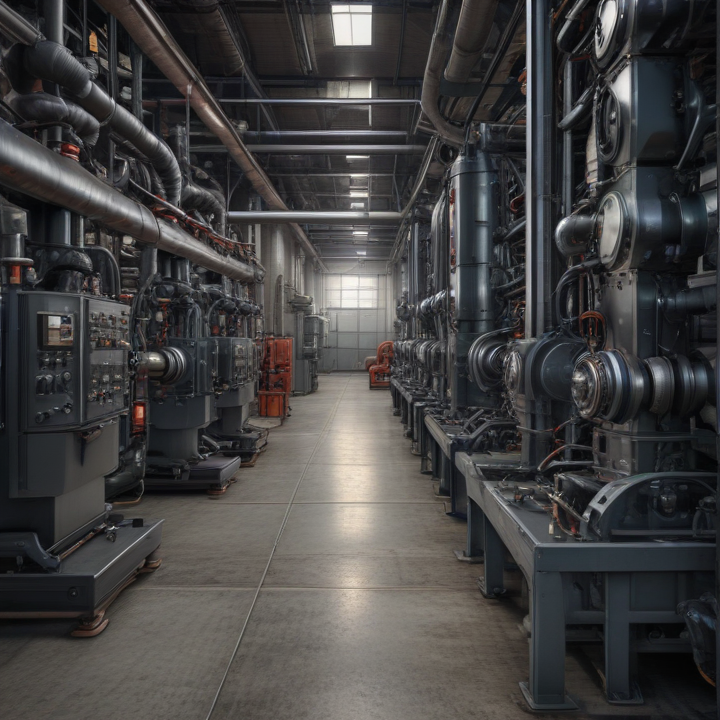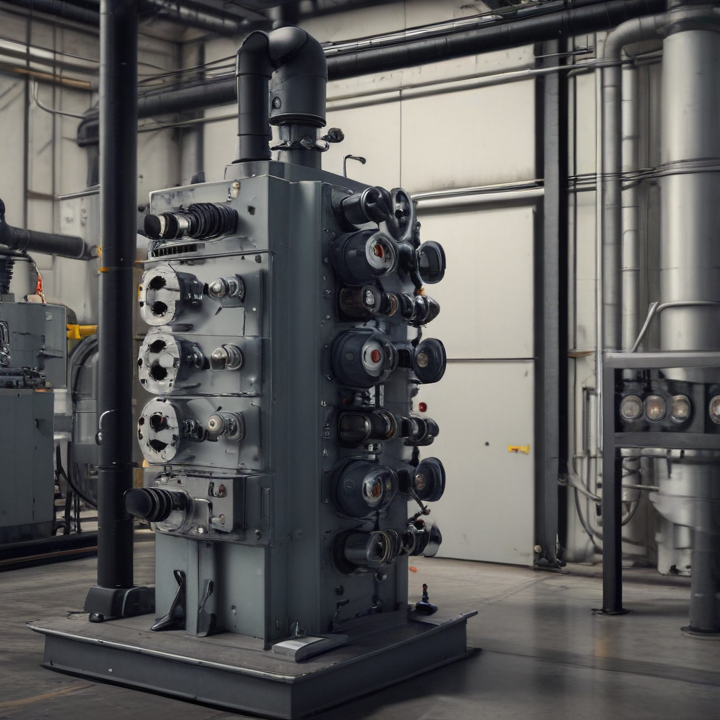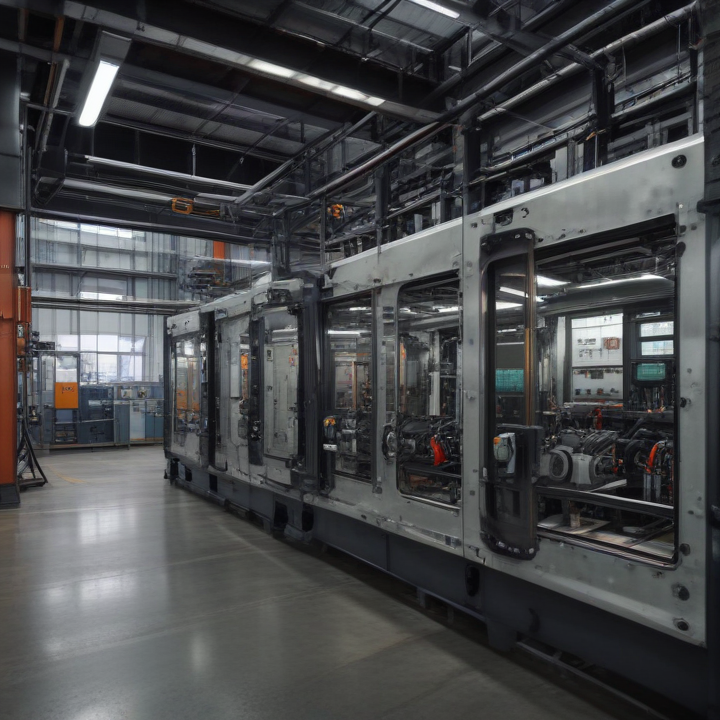industrial automation Safety Certifications
Industrial automation safety certifications ensure that automation systems meet specific safety standards to protect workers, equipment, and the environment. These certifications often involve rigorous testing and compliance with international safety regulations. Key certifications include:
1. Functional Safety (IEC 61508 and IEC 61511):
– IEC 61508: This standard covers the functional safety of electrical, electronic, and programmable electronic safety-related systems. It is applicable across industries and focuses on ensuring that systems respond correctly to their inputs, even under fault conditions.
– IEC 61511: Specifically designed for the process industry, this standard outlines the requirements for safety instrumented systems (SIS) that ensure safe operation of processes.
2. Machinery Directive (2006/42/EC):
– This is a European directive that governs the safety of machinery. It lays out essential health and safety requirements and is supported by harmonized standards like ISO 13849 for safety-related parts of control systems.
3. ISO 13849:
– This standard addresses the safety-related parts of control systems for machinery. It includes principles for the design and integration of safety-related parts of control systems.
4. UL Certifications (UL 508A, UL 1998):
– UL 508A: This standard pertains to the safety of industrial control panels and is widely recognized in the United States and Canada.
– UL 1998: Covers the safety of software used in programmable components, ensuring reliability in programmable logic controllers (PLCs) and other automation systems.
5. CSA (Canadian Standards Association):
– Provides certifications similar to UL, focusing on safety standards for machinery and control equipment in Canada.
6. ATEX and IECEx:
– These certifications relate to equipment intended for use in explosive atmospheres. ATEX is European, while IECEx is an international certification system.
Achieving these certifications involves detailed risk assessments, design reviews, and extensive testing to ensure systems can handle safety-critical functions reliably. Compliance ensures greater market access, credibility, and protection against liability.
List Reference Technical Parameters of “industrial automation”
Industrial automation involves the use of control systems, such as computers or robots, for handling different processes and machinery in an industry to replace human intervention. Below are some key reference technical parameters relevant for industrial automation:
1. Sensors and Actuators:
– Types: Proximity, temperature, pressure, and flow sensors.
– Accuracy, precision, and range specifications.
– Response time and durability.
2. Controllers:
– Types: Programmable Logic Controllers (PLC), Distributed Control Systems (DCS), and Industrial PCs.
– CPU speed, memory capacity, and I/O compatibility.
– Communication protocols supported (e.g., Modbus, Profibus, Ethernet/IP).
3. Human-Machine Interface (HMI):
– Screen size, resolution, and touch capability.
– Software support and customization features.
– Connectivity options (USB, Ethernet).
4. Networks and Communication:
– Wired: Ethernet, RS-232/485, CAN bus.
– Wireless: Wi-Fi, Bluetooth, ZigBee.
– Network topology, latency, and bandwidth requirements.
5. Robotics:
– Type: Articulated, SCARA, Cartesian, Delta, and collaborative robots (cobots).
– Payload capacity and reach.
– Degree of freedom (DOF) and precision.
6. Software:
– SCADA (Supervisory Control and Data Acquisition) systems.
– PLC programming languages: Ladder Logic, Functional Block Diagram (FBD), Structured Text.
– Middleware and integration tools for IoT and data analytics.
7. Power and Energy Management:
– Voltage, current, and power rating requirements.
– Power backup systems and energy efficiency parameters.
– Compliance with standards (e.g., ISO 50001).
8. Safety and Standards:
– Compliance with safety standards (e.g., ISO 13849, IEC 61508).
– Emergency stop, fail-safe, and redundancy mechanisms.
– Risk assessment and mitigation strategies.
9. Environmental Parameters:
– Operating temperature and humidity range.
– IP (Ingress Protection) rating for dust and water resistance.
– Vibration and shock resistance.
10. Maintenance and Diagnostics:
– Built-in diagnostic tools and predictive maintenance features.
– Remote monitoring and troubleshooting capabilities.
– Mean Time Between Failures (MTBF) and Mean Time to Repair (MTTR) metrics.
These parameters serve as a benchmark to ensure reliability, efficiency, and safety in industrial automation applications.
List Product features of “industrial automation”
Certainly! Here are some key product features of industrial automation:
1. Robust Hardware: Built to withstand harsh industrial environments, including extreme temperatures, dust, and moisture.
2. Scalability: Modular design allows for easy expansion and integration as business needs evolve.
3. Precision Control: High accuracy and repeatability for precise manufacturing processes and quality control.
4. Real-Time Monitoring: Immediate data collection and analysis for timely decision-making and maintenance.
5. Flexibility: Adaptable to various applications and compatible with a wide range of machinery and equipment.
6. Connectivity: Seamless integration with IoT, SCADA, and other networked systems for enhanced data sharing and system interoperability.
7. Energy Efficiency: Optimized resource usage to reduce energy consumption and operational costs.
8. Safety Features: Advanced safety protocols including emergency stop functions, fail-safe mechanisms, and compliance with industry safety standards.
9. User-Friendly Interface: Intuitive software with easy-to-use dashboards and controls for streamlined operation.
10. Predictive Maintenance: Proactive maintenance alerts to minimize downtime and extend equipment lifespan through predictive analytics.
11. High-Speed Operation: Capable of performing processes at high speeds without sacrificing accuracy.
12. Customizability: Tailored solutions to meet specific industry requirements and operational workflows.
13. Data Logging: Comprehensive data recording and storage for historical analysis and compliance reporting.
14. Remote Access: Ability to monitor and control systems remotely, facilitating off-site management and troubleshooting.
15. Cost Efficiency: Reduction in labor costs and improved overall operational efficiency contributing to a quick ROI.
16. Integration with ERP: Smooth alignment with Enterprise Resource Planning systems for streamlined production and resource management.
17. Compliance: Adherence to industry-specific regulations and standards for quality and safety.
18. Support Services: Comprehensive support, including installation, training, and ongoing technical assistance.
These features collectively help optimize industrial processes, boost productivity, and ensure operational reliability.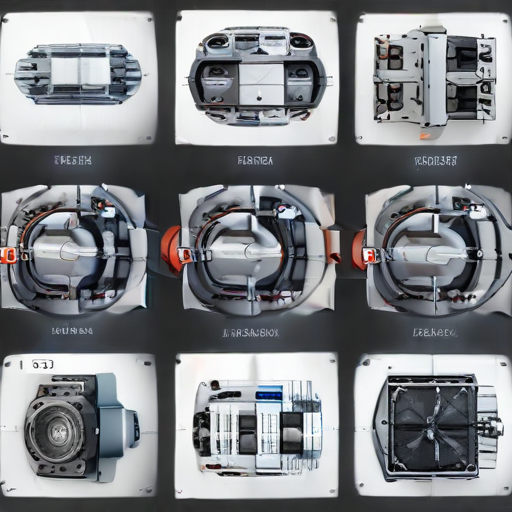
List Various Types of “industrial automation”
Certainly! Industrial automation involves the use of control systems, such as computers or robots, to handle different industrial processes and machinery. Here are various types of industrial automation:
1. Fixed Automation: Also known as hard automation, this type involves the use of specialized equipment to automate a specific set of tasks. It is highly efficient for high-volume production with a set sequence of operations. Examples include assembly lines and transfer lines.
2. Programmable Automation: This type is used for batch production where the sequence of operations can be changed through the use of control programs. It is suitable for medium to high-volume production runs. Examples include CNC machines and industrial robots.
3. Flexible Automation: Also known as soft automation, this type allows for quick changeovers and adaptability. It is ideal for producing a variety of products without requiring major reconfiguration. Systems include flexible manufacturing systems (FMS).
4. Robotic Automation: Utilizes robots to perform tasks such as welding, painting, assembly, and material handling. Robots can be programmed for high precision and consistency, which enhances productivity and safety.
5. Process Automation: Focused on the automation of continuous production processes such as in chemical, oil refining, and food and beverage industries. It often involves the use of Distributed Control Systems (DCS) and Programmable Logic Controllers (PLCs).
6. Integrated Automation: Involves the integration of various automation systems to create a seamless and interconnected manufacturing environment. It often includes the use of advanced manufacturing technologies such as the Internet of Things (IoT), smart sensors, and cyber-physical systems.
7. Industrial Internet of Things (IIoT): Involves connecting machinery and equipment to the internet, allowing for data collection, monitoring, and predictive maintenance, enhancing efficiency and reducing downtime.
8. Human-Machine Interface (HMI): Provides user interfaces that connect operators to the control system, enabling easier monitoring and control of industrial processes.
Each type of industrial automation has its unique set of applications and benefits, significantly enhancing productivity, reducing errors, and improving safety in industrial operations.
List Application of “industrial automation”
Industrial automation has revolutionized modern manufacturing and other industrial processes through the use of control systems, such as computers or robots, and information technologies for handling different processes and machinery. Here are some key applications of industrial automation:
1. Assembly Lines: Automation streamlines assembly processes in automotive, electronics, and consumer goods industries. It increases production speed, consistency, and precision while reducing labor costs.
2. Quality Control: Automated inspection systems using sensors and cameras ensure high-quality standards by detecting defects and anomalies in products. This application is vital in food processing, pharmaceuticals, and electronics industries.
3. Packaging: Automation in packaging includes sorting, packing, labeling, and palletizing products. It optimizes speed, reduces errors, and minimizes human fatigue in sectors like food & beverage, pharmaceuticals, and consumer goods.
4. Material Handling: Automated conveyor systems, robotic arms, and Automated Guided Vehicles (AGVs) are employed for efficient material transport within facilities. This is crucial in warehouses, distribution centers, and production plants.
5. Process Control: Automation is extensively used in industries like oil & gas, petrochemicals, and wastewater treatment for monitoring and controlling process parameters, such as temperature, pressure, and flow rates.
6. Robotic Welding: Industrial robots perform precise welding tasks in automotive and heavy machinery manufacturing, enhancing production speed and weld quality while ensuring safety.
7. Machining: Computer Numerical Control (CNC) machines automate metal and plastic cutting, shaping, and finishing processes, providing high precision and consistency in manufacturing complex components.
8. Inventory Management: Automated inventory systems, including RFID and barcode technologies, help track and manage stock levels in real-time, leading to better supply chain efficiency and reduced inventory costs.
9. Environmental Monitoring: Automation systems monitor and regulate environmental conditions in industrial plants to ensure compliance with health and safety regulations.
Industrial automation not only enhances efficiency and productivity but also helps in maintaining high safety and environmental standards. By reducing dependency on manual labor, it minimizes human errors and optimizes overall operational costs.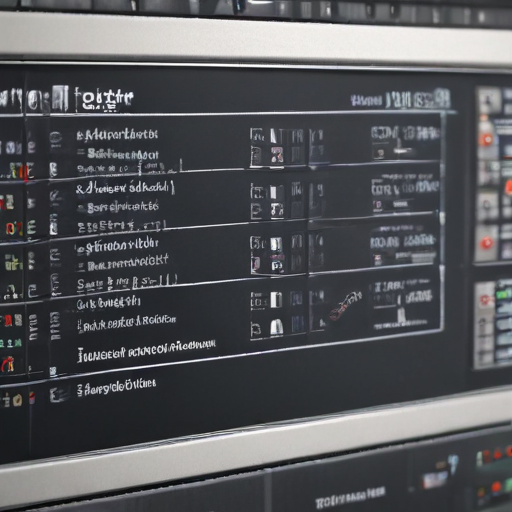
List Buyer Types of “industrial automation”
In the realm of industrial automation, buyers can primarily be categorized into the following types:
1. End-User Industries:
– Manufacturing: This includes sectors like automotive, electronics, food and beverage, pharmaceuticals, and consumer goods, which implement automation to enhance production efficiency, quality, and safety.
– Energy and Utilities: Companies in oil and gas, power generation, and renewable energy deploy automation to ensure the reliable and efficient operation of complex processes.
– Mining and Metals: Automation is used to increase productivity, optimize operations, and enhance safety in mining and metal processing.
– Chemical and Petrochemical: These industries require precise control and monitoring, making automation crucial for maintaining high-quality standards and safe operations.
2. System Integrators:
– These firms specialize in designing, implementing, and maintaining automation systems tailored to the specific needs of various end-user industries. They act as intermediaries between the equipment and software suppliers and the end users, ensuring seamless integration and operation.
3. OEMs (Original Equipment Manufacturers):
– Companies that produce machinery and equipment used in manufacturing and industrial processes often incorporate automation technologies to enhance their products’ functionality and efficiency before delivering to end-users.
4. Consulting Firms and Engineering Services:
– These entities provide expertise in planning, designing, and optimizing automation systems. They help end-users in strategizing and deploying automation solutions aligned with their operational goals.
5. Government and Regulatory Bodies:
– Agencies involved in infrastructure development, public utilities, and standard-setting often invest in automation to enhance efficiency, compliance, and safety in their operations.
6. Distributors and Resellers:
– They act as intermediaries between manufacturers of automation equipment and the end-users, providing access to a range of products and sometimes offering added services like installation and maintenance.
Each of these buyer types plays a crucial role in the industrial automation ecosystem, driving the adoption and advancement of automation technologies across different sectors.
List “industrial automation” Project Types for Different Industries
Industrial automation spans a wide range of project types across various industries, aiming to enhance efficiency, safety, and productivity. Below are some common project types categorized by industry:
Manufacturing
1. Robotic Welding Systems
– Automated welding for precision and speed.
2. Assembly Line Automation
– Integration of robots and sensors for streamlined assembly processes.
3. CNC Machine Automation
– Computer numerical control systems for precision machining.
Automotive
1. Automated Guided Vehicles (AGVs)
– Self-guided transport systems for materials and parts.
2. End-of-Line Testing Automation
– Automated functional testing for quality assurance.
3. Painting and Coating Robots
– Robotic arms for consistent paint applications and coatings.
Food and Beverage
1. Packaging Automation
– Automated packaging lines, including wrapping, labeling, and boxing.
2. Mixing & Blending Systems
– Automated recipes and ingredient handling systems.
3. Quality Inspection Systems
– Vision systems for checking product quality and consistency.
Pharmaceutical
1. Batch Processing Automation
– Automated control units for drug manufacturing processes.
2. Automatic Dispensing Systems
– Precision dispensing for medication formulation.
3. Sterilization Process Automation
– Ensuring compliance with hygiene standards through automated sterilization.
Oil and Gas
1. Pipeline Monitoring Systems
– Automated surveillance and leak detection systems.
2. Drilling Automation
– Robotics for precise and safe drilling operations.
3. Distributed Control Systems (DCS)
– Centralized control for processing plants, ensuring optimal operation.
Electronics
1. PCB Assembly Automation
– Automated systems for assembling printed circuit boards.
2. Component Testing and Sorting
– High-speed testing and sorting of electronic components.
3. Surface Mount Technology (SMT) Automation
– Automated placement of components on PCBs.
Utilities
1. Smart Grid Solutions
– Automation in electricity distribution for better efficiency and reliability.
2. Water Treatment Automation
– Systems for automated water purification and distribution.
3. Renewable Energy Management
– Automated systems for managing solar, wind, and other renewable sources.
Logistics
1. Warehouse Management Systems (WMS)
– Automation for inventory tracking and order fulfillment.
2. Automated Storage and Retrieval Systems (AS/RS)
– High-efficiency storage solutions using robotics.
3. RFID and Barcode Systems
– Automated tracking of goods and materials through RFID and barcode technologies.
By embracing these diverse automation project types, industries can significantly improve operational efficiency, reduce costs, and ensure higher quality standards.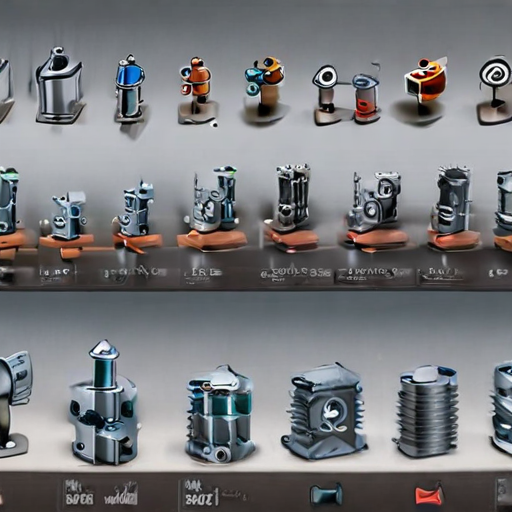
industrial automation Accessories Upgrades and Custom Manufacturing Options
Industrial automation is a cornerstone of modern manufacturing, significantly enhancing productivity, precision, and cost-efficiency. Optimizing these systems often involves the inclusion of high-quality accessories, upgrades, and custom manufacturing options. Below are some notable considerations:
Accessories
1. Sensors and Actuators: Advanced sensors and actuators are essential for accurate data collection and control. Options include proximity sensors, pressure sensors, and high-speed actuators.
2. Conveyor Systems: Modular conveyor systems can be tailored to meet specific production needs, enabling seamless material handling.
3. Safety Components: Safety components like emergency stop buttons, safety light curtains, and interlock switches ensure compliance with safety regulations.
Upgrades
1. Software Updates: The latest software upgrades can offer improved functionalities, better integration, and enhanced cybersecurity.
2. Hardware Enhancements: Upgrading to more powerful controllers or incorporating edge computing capabilities can significantly boost performance.
3. Network Upgrades: Implementing advanced networks such as Industrial Ethernet or 5G can facilitate faster data transfer and more reliable communication.
Custom Manufacturing Options
1. Tailored Machinery: Custom-built machinery designed to your specifications can optimize workflow and increase efficiency. Examples include specialized CNC machines and custom robotic arms.
2. Modular Design: A modular approach allows for scalable solutions, enabling easy integration of new components and technologies as needs evolve.
3. Material Customization: Selecting the right materials—whether for durability, flexibility, or specific environmental conditions—can greatly impact the longevity and performance of your automation systems.
Conclusion
By investing in the right accessories, engaging in timely upgrades, and leveraging custom manufacturing options, businesses can significantly enhance the efficiency, safety, and agility of their industrial automation systems. These investments pave the way for sustained competitive advantage and operational excellence.
List Quality Control and The Manufacturing Process of “industrial automation”
Quality Control in Industrial Automation:
Quality control (QC) in industrial automation is pivotal to ensuring products meet specified standards and operate reliably. Effective QC practices involve:
1. Inspection and Testing: Automated systems perform consistent and precise inspections using sensors, cameras, and machine vision for defect detection.
2. Standardization: Implementing international standards like ISO 9001 ensures processes align with quality benchmarks.
3. Data Collection: Real-time data from devices and machines helps in monitoring performance, identifying anomalies, and making informed decisions.
4. Predictive Maintenance: Using predictive analytics to foresee potential failures, reducing downtime, and maintaining continuous production.
5. Feedback Loops: Continuous improvement through feedback systems that gather outputs and refine processes.
6. Documentation: Keeping detailed records of processes, tests, and inspections to trace quality and make necessary adjustments.
—
Manufacturing Process in Industrial Automation:
1. Design and Development:
– *Conceptualization:* Identifying requirements and drafting initial designs using Computer-Aided Design (CAD) software.
– *Prototyping:* Creating prototypes for initial testing and feedback.
2. Material Procurement:
– *Sourcing:* Obtaining high-quality raw materials and components from verified suppliers.
3. Production:
– *Automation Setup:* Employing PLCs (Programmable Logic Controllers), robotics, and automated machinery to streamline manufacturing processes.
– *Assembly Line:* Automated conveyor systems facilitate efficient component assembly.
4. Programming and Configuration:
– *Software Integration:* Developing custom software for machine control and coordination.
– *Testing:* Rigorous testing of software and hardware integration.
5. Quality Assurance:
– *In-process QC:* Continual monitoring of production for adherence to quality standards.
– *Final QC:* Extensive inspection of finished products before packaging.
6. Packaging and Distribution:
– *Packaging:* Automated packaging systems ensure products are securely packed.
– *Distribution:* Coordinated logistics for efficient shipment and delivery.
By applying stringent QC measures throughout these steps, industrial automation ensures high-quality, reliable outcomes in manufacturing.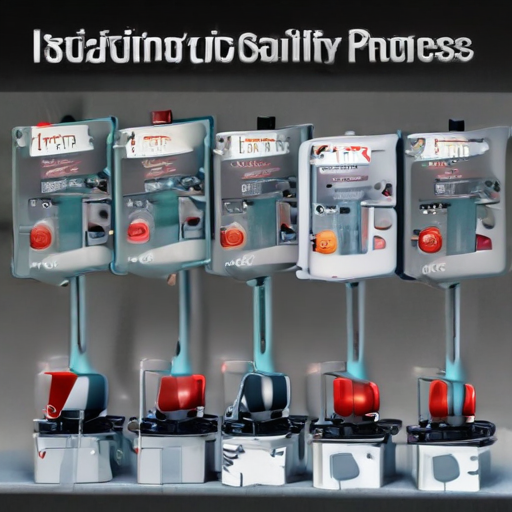
How to use “industrial automation”
Industrial automation involves the use of control systems such as computers and robots to handle different processes and machinery in an industry. Here’s how to use it effectively:
1. Identify the Process: Determine which processes can be automated. This could be repetitive tasks, hazardous activities, or operations requiring high precision. Examples include assembly lines, painting, welding, and quality control.
2. Choose the Right Technology: Based on the process, select the appropriate automation technology. Options include Programmable Logic Controllers (PLCs), Supervisory Control and Data Acquisition (SCADA) systems, and robotics. Each has its own strengths; PLCs for control, SCADA for monitoring and data collection, and robots for physical tasks.
3. Integration: Integrate the automation systems with existing machinery and processes. Ensure seamless communication between different parts of the system. This may involve sensor integration, network configuration, and software programming.
4. Safety Measures: Implement safety protocols to protect workers and equipment. Use safety sensors, emergency stops, and safety barriers. Regularly update and test safety measures to comply with industry standards.
5. Training: Train staff to operate and maintain automated systems. This includes understanding the control systems, troubleshooting common issues, and conducting regular maintenance.
6. Monitoring and Optimization: Continuously monitor the automated processes using data collected through SCADA or other monitoring tools. Use this data to optimize performance, predict maintenance needs, and improve efficiency.
7. Scalability and Flexibility: Design automation solutions that can be scaled up or down based on production needs. Flexible systems can adapt to different tasks and products, providing long-term value.
Automation can significantly increase efficiency, reduce errors, and improve safety. By carefully planning and implementing automation, industries can stay competitive and responsive to market demands.
“industrial automation” Comparative Analysis
Industrial automation encompasses the use of control systems, like computers or robots, to handle different industrial processes and machinery, reducing human intervention. Here’s a comparative analysis focusing on its key aspects:
1. Efficiency and Productivity:
– Traditional Manufacturing: Relies heavily on manual labor, leading to variability in output and skill levels.
– Automated Systems: Maintain consistent and high-quality production, operating 24/7 without fatigue, thus markedly improving productivity.
2. Cost Implications:
– Initial Investment: Automation demands a significant upfront cost for machinery, software, and training.
– Long-Term Savings: Over time, reduced labor costs, minimized errors, and lower operational expenses typically achieve cost-effectiveness.
3. Accuracy and Precision:
– Manual Processes: Susceptible to human errors, fluctuations, and quality inconsistencies.
– Robotic Automation: Offers high precision and repeatability, enhancing product quality and reducing waste.
4. Flexibility and Customization:
– Conventional Methods: Human operators can adapt to varied tasks, but at the cost of speed and uniformity.
– Automated Systems: Modern automation, particularly with AI and machine learning, can be highly adaptable, although reprogramming robots can be complex and time-consuming.
5. Safety:
– Manual Labor: Involves risks, especially in hazardous environments like chemical plants or heavy machinery.
– Automation: Enhances safety by handling dangerous tasks, thus protecting human workers from potential harm.
6. Scalability:
– Traditional Approaches: Scaling up requires more workforce and resources, leading to higher costs.
– Automated Systems: Easily scalable with additional units or software upgrades, seamlessly meeting increased demand.
7. Environmental Impact:
– Human-Operated Systems: Potentially produce more waste and consume more energy due to less efficiency.
– Automation: Generally more energy-efficient and can be programmed for optimal resource usage, reducing environmental footprint.
In conclusion, while industrial automation involves high initial costs, it offers substantial benefits in efficiency, precision, safety, scalability, and long-term cost savings. The strategic integration of automated systems is crucial for industries aiming to enhance productivity and maintain competitiveness in the global market.
“industrial automation” Warranty and Support
Industrial Automation: Warranty and Support
In the realm of industrial automation, robust warranty and support services are paramount to ensure the continuity and efficiency of operations. High-quality automation systems often come with comprehensive warranties, typically ranging from one to five years, depending on the manufacturer and the complexity of the equipment. These warranties generally cover defects in materials and workmanship, providing repair or replacement of components at no additional cost to the customer.
Moreover, many suppliers offer extended warranty plans for an additional fee, which can provide peace of mind by extending the coverage period and including extra services such as annual inspections and expedited parts replacement. The specifics of warranty coverage can vary, so it’s crucial for customers to thoroughly review the terms and conditions.
Support services in industrial automation are designed to minimize downtime and enhance productivity. These services usually include 24/7 technical support, on-site service visits, and remote diagnostics. Technical support teams are staffed by skilled engineers and technicians who can assist with troubleshooting, software updates, and system optimization. Remote diagnostics tools enable real-time monitoring and quick issue resolution, often before they can impact production.
Additionally, many vendors offer comprehensive training programs to ensure that customer personnel are proficient in operating and maintaining the automation systems. This can encompass on-site training, web-based tutorials, and detailed user manuals.
For critical operations, premium support packages might be available, featuring faster response times, dedicated account managers, and customized maintenance plans. Such packages are ideal for industries where even minimal downtime can lead to significant financial losses.
In summarizing, robust warranty and support options are vital features in industrial automation, ensuring reliability, minimizing disruptions, and providing customers with the tools and knowledge they need to maintain peak operational efficiency. Always carefully evaluate these aspects when selecting an automation partner to ensure they meet the specific needs of your business operations.
List “industrial automation” FAQ
Industrial Automation FAQ
1. What is industrial automation?
Industrial automation involves using control systems, such as computers or robots, and information technologies to handle different processes and machinery in an industry to reduce human intervention.
2. What are the benefits of industrial automation?
Automation can significantly increase productivity, improve quality and consistency, enhance safety, reduce labor costs, and ensure more efficient use of resources.
3. What industries use automation?
Automation is prevalent in sectors like manufacturing, automotive, energy, pharmaceuticals, food and beverage, and electronics.
4. What are common types of automation?
Common types include Fixed Automation (for high-volume production), Programmable Automation (for batch production), and Flexible Automation (for high-mix, low-volume production).
5. What is a PLC?
A Programmable Logic Controller (PLC) is an industrial digital computer designed for controlling manufacturing processes or machinery.
6. What is SCADA?
Supervisory Control and Data Acquisition (SCADA) is a system of software and hardware that allows industrial organizations to control processes locally or at remote locations.
7. What is the role of robots in automation?
Robots are used for tasks that are dangerous, repetitive, or require high precision, ranging from assembly and welding to packaging and inspection.
8. What are IoT and IIoT in automation?
The Internet of Things (IoT) refers to a network of physical devices connected via the internet, sharing data. The Industrial Internet of Things (IIoT) applies this concept specifically to industrial settings to enhance system efficiency and productivity.
9. Are there challenges in implementing automation?
Challenges include high initial costs, complex integration processes, potential job displacement, and the need for ongoing maintenance and technical support.
10. What is the future of industrial automation?
The future lies in more advanced AI-driven systems, further integration of IoT/IIoT, enhanced analytics, improved human-machine interfaces, and more comprehensive cybersecurity measures.
By understanding these FAQs, industries can make informed decisions on adopting automation technologies to streamline their operations and stay competitive.
Top 10 FAQ with answer about industrial automation for Buyer Sourcing from China
Certainly! Here are the top 10 frequently asked questions (FAQ) about industrial automation for buyers sourcing from China, answered concisely:
1. What should I consider when choosing a supplier for industrial automation products in China?
– Look for suppliers with strong certifications (ISO, CE), robust quality control processes, and good reviews. Assess their production capacity, lead times, and after-sales support.
2. How can I verify the quality of automation products from Chinese suppliers?
– Request product samples, check certifications, and conduct factory audits. Using third-party inspection services can also provide unbiased assessments.
3. Are Chinese industrial automation products compliant with international standards?
– Many Chinese manufacturers comply with international standards like CE, ISO, and UL. Always request and verify relevant certifications before purchase.
4. What is the typical lead time for industrial automation equipment from China?
– Lead time varies based on complexity and quantity but generally ranges from 4 to 12 weeks. Customized solutions may require longer.
5. How do I ensure reliable after-sales support from Chinese suppliers?
– Choose suppliers with a good reputation for after-sales service. Ensure they provide comprehensive support including spare parts, technical assistance, and warranty services.
6. Can I get customized automation solutions from Chinese manufacturers?
– Yes, many manufacturers offer customization to meet specific requirements. Be explicit about your needs and verify their capabilities through detailed discussions and prototypes.
7. What are the payment terms typically offered by Chinese suppliers?
– Common payment terms include TT (Telegraphic Transfer), L/C (Letter of Credit), and occasionally, PayPal for smaller transactions. Initial orders may require a deposit.
8. How can I handle language barriers when sourcing from China?
– Many suppliers have English-speaking staff. Alternatively, hiring a local agent or using professional translation services can be helpful.
9. Is it safe to share intellectual property with Chinese manufacturers?
– Protect your IP with non-disclosure agreements (NDAs) and select reputable companies with proven trustworthiness.
10. How do I deal with shipping and customs when importing from China?
– Collaborate with experienced freight forwarders who can handle shipping logistics and customs clearance. Ensure all documentation (commercial invoice, packing list, bill of lading) is accurate and complete.
These FAQs cover essential aspects of sourcing industrial automation equipment from China, aiding in making informed decisions and fostering successful partnerships.

